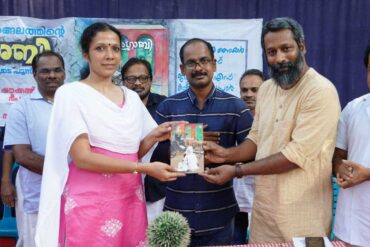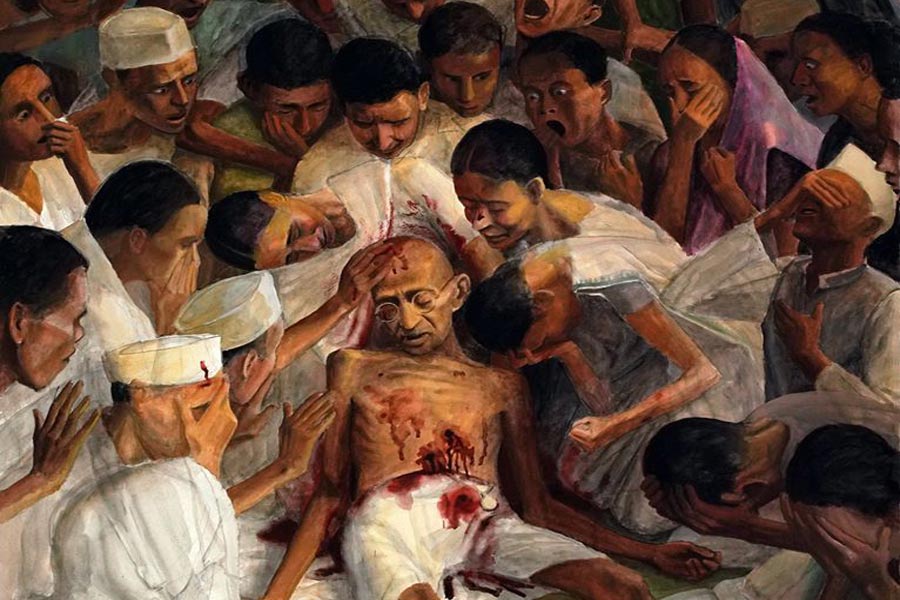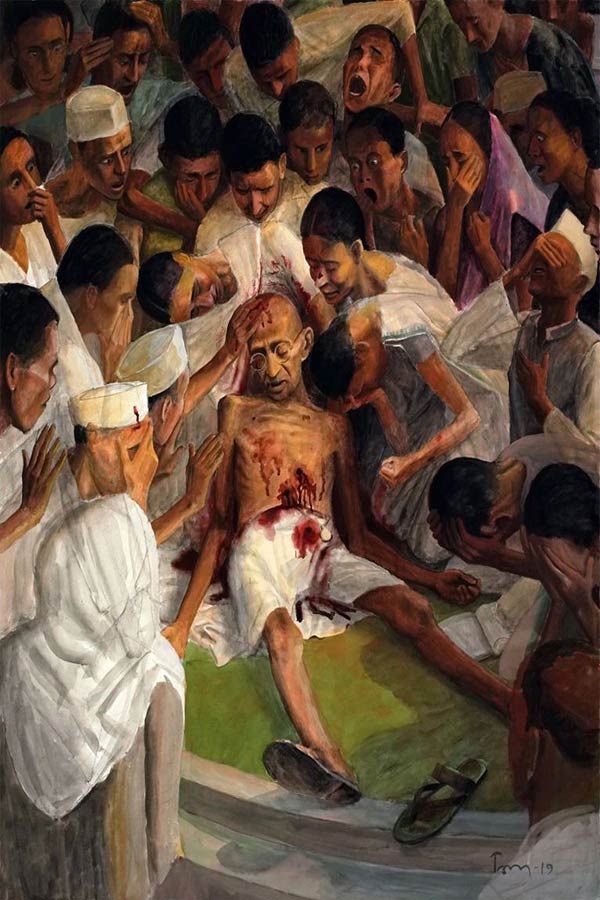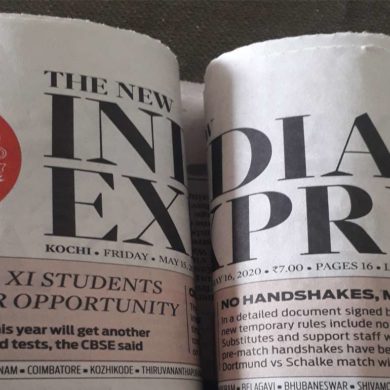India without Mahatma Gandhi cannot be imagined but there are forces at work attempting to do just that. And even as controversy over the removal of the photographs of the death of Gandhiji from Gandhi Smriti broke out just before Martyr’s Day, a painting, depicting the last gory moments of Gandhiji, evoked painful memories. The painting that shows Gandhiji surrounded by shocked and shattered mourners was shared widely on social media, tweeted by the likes of Rahul Gandhi and Kanhaiya Kumar. However, many of them, including Rahul Gandhi, shared the image without attributing it to the artist.
The painting titled Death of Gandhi done in gouache on canson paper is the work of artist Tom Vattakuzhy, a native of Kochi. What drove him to do this painting? Vattakuzhy says it is the need of the hour. “When our history is at stake, we have to reaffirm it through art. At a time when the ideologies and death of Gandhi are misinterpreted, we have to assert it through the visual language.” It was after he completed the work that the Gandhi Smriti gallery episode where Thushar Gandhi blamed the gallery for omitting details while digitising last moments of Mahatma Gandhi, happened. “It is a time when certain forces attempt to alter history with lies. So, it is important to say the fact,” adds Vattakuzhy, who was brought up reading and listening to the words of Gandhi. It is difficult for him to imagine an India without Gandhi. “Gandhi is more than a sentiment for us. His values have played a key role in forming our perspective. To envision an India without Gandhi is difficult for me. He is dear to us. His story and thoughts should shine bright.
Another reason that inspired Vattakuzhy to do the painting is India’s lack of history paintings. Much of those history paintings were removed from India by the colonisers. “If we look at the history of European art, we can find the genre ‘history painting’ where historical events are portrayed. Take the instance of Mahatma Gandhi, the existing works are romanticised ones. I have been thinking about creative ways of preserving our history. This visual documentation is an effort towards that cause.”
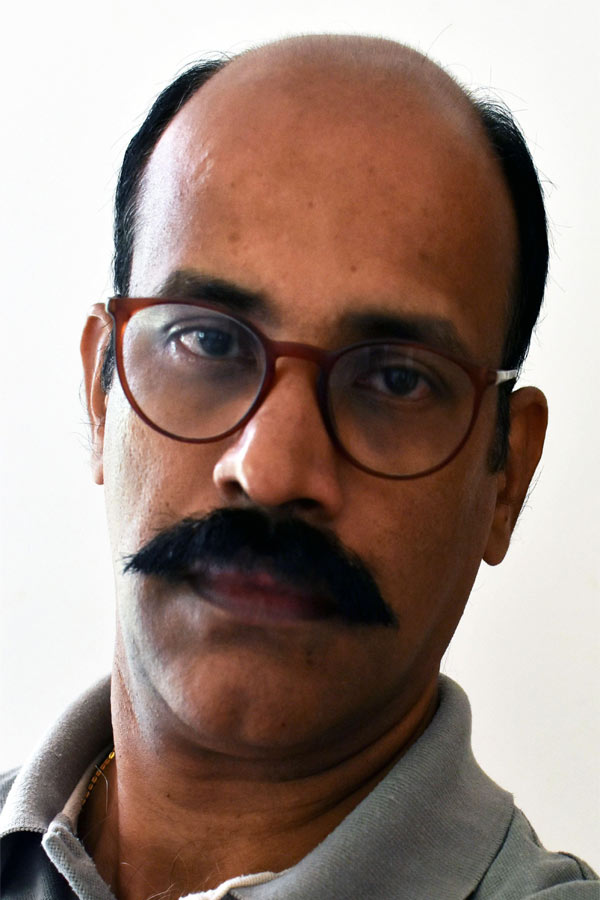
The Death of Gandhi was first used as the cover of a souvenir published by the Government of Kerala as part of the Rakthasakshyam programme organised to commemorate the martyrdom of Gandhi. Vattakuzhy has drawn inspiration from the works of masters, especially renaissance painters who often painted Christ. “My study of the masters began when my uncle who went to Europe for his studies brought me travel guides decorated with their works. Their style left a deep impression on my mind. It stayed with me.”
Reminiscent of the Lamentations of Christ paintings and the Pieta, the witnesses in Death of Gandhi are consumed by horror and pain. Vattakuzhy has created the same effect and also connect the two. “It is done in a manner for the audience to see Christ in Gandhi. In a way, they are connected,” explains Vattakuzy, who believes that artists should speak their mind. “Artist should not be a romantic person who lives in a bubble of imagination,” he believes. That is perhaps the reason why his works are political and get attention.
Death of Gandhi is just a beginning for Vattakuzhy. He has plans to paint more works in the history painting genre. Because he believes truth has to be told aloud when history is misinterpreted for propaganda. For Vattakuzhy, the worst part was to see a few people misconstruing the painting. “It was unfortunate to see that a section of people has used the painting to celebrate the heroism of Godse,” he says. “But we can’t do much to change their perspective.”
Vattakuzhy has mixed feelings about the feedback. He is happy because the painting has garnered nation-wide attention. As an artist, it is fulfilling for him as he wants this painting to be etched in the minds of Indians as a memoir of the country’s past. “People shared it because they could emotionally connect to Gandhi and his principles, and I am happy for the immense response,” says Vattakuzhy.
What leaves him disturbed, as he describes on a Facebook post: “is to see the work being circulated like a fatherless child. “When I posted it on Facebook, it got a lot shares,” he says. That does not mean he justifies the act of sharing an artwork without giving credit. According to him, it shows their ignorance about art. “Although we claim to be a developed society, we lack the practice of acknowledging an artist’s effort. An artwork is an outcome of hours of hard work by the artist. It deserves recognition. When we use a literary piece or cinema clip, we give credit, why not with artwork?” he asks.
Once the issue caught the attention of netizens, many have come forward to acknowledge the artist. “Some even alerted Rahul. As a responsible politician, he should have been careful while sharing it,” feels Vattakuzhy. However, musician Shahbaz Aman has duly given him the credit when he used the painting in a musical tribute to Gandhi with Bijibal and Madhu Paul.

